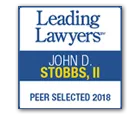Transferring a firearm in an Illinois city like Edwardsville or Alton involves specific legal steps to ensure compliance with state and federal laws. Here’s a detailed guide based on the regulations and procedures outlined by Illinois state laws.
1. Understand the Legal Requirements
Before transferring a firearm, it’s crucial to understand the legal requirements in Illinois:
- FOID Card: Both the seller and the buyer must possess a valid Firearm Owner’s Identification (FOID) card.
- Background Check: A background check must be conducted to ensure the buyer is legally permitted to own a firearm. You can verify FOID cards here.
- Record Keeping: Both parties must keep a record of the transaction for at least 10 years.
2. Conducting the Transfer
The process varies slightly depending on whether the transfer is between private individuals or involves a Federal Firearms License (FFL) dealer.
Private Transfer
For a private transfer (between two individuals):
- Verify FOID Cards: Ensure that both parties have valid FOID cards.
- Initiate Background Check: The seller must contact the Illinois State Police to verify the buyer’s FOID card and complete a background check.
- Wait Period: There is a mandatory waiting period—72 hours for handguns and 24 hours for long guns.
- Complete the Transfer: After the waiting period, complete the transfer and document it. Include details such as the date, firearm description, and FOID card numbers of both parties.
Transfer via FFL Dealer
For a transfer involving an FFL dealer:
- Dealer Responsibilities: The dealer will conduct the background check and ensure compliance with federal and state laws.
- Documentation: The dealer will handle the necessary documentation and record-keeping.
3. Legal Provisions and Compliance
Illinois law outlines specific provisions for person-to-person transfers:
- 430 ILCS 65/3(a): This section states that no person may knowingly transfer a firearm, ammunition, stun gun, or taser to another person within Illinois unless the transferee displays a valid FOID card or a valid license to carry a concealed firearm issued by the Department of State Police. Federally licensed firearm dealers must also comply with Section 3.1 for all transfers.
- 430 ILCS 65/3(a-10): This subsection requires private sellers to contact the Illinois State Police to verify the validity of the buyer’s FOID card before completing the transfer. The State Police will provide an approval number if the FOID card is valid, which is valid for 30 days from the date of issue.
For more details, you can verify FOID cards here.
4. Record Keeping
Both the seller and the buyer must maintain a record of the transaction, including:
- Names and FOID card numbers of both parties.
- Date of the transfer.
- Description of the firearm (make, model, and serial number).
5. Special Considerations
- Interstate Transfers: If transferring a firearm across state lines, federal law requires the involvement of an FFL dealer.
- Inherited Firearms: Special rules may apply to firearms acquired through inheritance. It’s advisable to consult with a legal expert in such cases.
6. Legal Consequences
Failure to comply with Illinois firearm transfer laws can result in serious legal consequences, including fines and imprisonment. Always ensure that all steps are followed meticulously.
Conclusion
Transferring a firearm in Illinois involves several critical steps to ensure legal compliance. By understanding and following these steps, you can ensure a smooth and lawful transfer. Always consult with legal professionals if you have any doubts or specific circumstances that require special attention.
If you have any further questions or need assistance with specific scenarios, feel free to reach out to legal experts or your local law enforcement agency.




